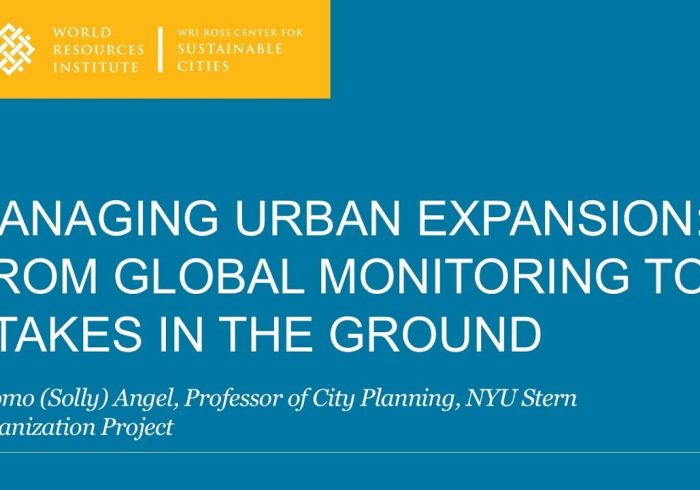امروز : جمعه, ۷ اردیبهشت , ۱۴۰۳
- عذرخواهی تتلو/ برگزاری یازدهمین جلسه دادگاه منافقین/کاهش سرقت در اسفند ۱۴۰۲
- داستان برتر هیوستون، تگزاس – پانل خدمات مشاوره، ۲۱ دسامبر ۲۰۲۳، منطقه کریدور انرژی (ECD) در هیوستون، تگزاس، خود را به عنوان مکانی برای برجسته کردن، تبلیغ و به نمایش گذاشتن افراد مهم در نظر می گیرد.
- رئیس شورای عالی استان ها: تلاش برای تکمیل مدیریت یکپارچه شهری
فيلم: مدیریت گسترش شهری: از نظارت جهانی تا سهام در زمین – شلومو آنجل
Title:مدیریت گسترش شهری: از نظارت جهانی تا سهام در زمین – شلومو آنجل دکتر شلومو (سالی) آنجل، برنامه توسعه شهری NYU را رهبری می کند. مأموریت اصلی این برنامه کمک به شهرداری های شهرهای با رشد سریع در ایجاد فضا برای گسترش اجتناب ناپذیر آنها، ایجاد پیش بینی های واقع بینانه از نیازهای زمین در […]
Title:مدیریت گسترش شهری: از نظارت جهانی تا سهام در زمین – شلومو آنجل
دکتر شلومو (سالی) آنجل، برنامه توسعه شهری NYU را رهبری می کند. مأموریت اصلی این برنامه کمک به شهرداری های شهرهای با رشد سریع در ایجاد فضا برای گسترش اجتناب ناپذیر آنها، ایجاد پیش بینی های واقع بینانه از نیازهای زمین در آینده و همچنین حداقل آمادگی های لازم برای سازگاری با رشد جمعیت آنها به طور منظم و منظم است. به شیوه ای پایدار، تضمین می کند که زمین فراوان و مقرون به صرفه باقی می ماند. ماموریت ثانویه برنامه توسعه شهری دانشگاه نیویورک، دستیابی به درک بهتری از گسترش شهری در سرتاسر جهان با نظارت بر آن در کل جهان از ۴۲۵۰ شهر و منطقه کلان شهری است که در سال ۲۰۱۰ دارای ۱۰۰۰۰۰ نفر یا بیشتر بودند و با جمع آوری و تجزیه و تحلیل شواهد. در مورد کمیت زمین مورد نیاز برای گسترش شهری، سازماندهی فیزیکی و مقرون به صرفه بودن آن، و نیروهای مؤثر بر آن در یک نمونه طبقه بندی شده جهانی از ۲۰۰ شهر از این شهرها.
قسمتي از متن فيلم:
ID: alNUMmlYwgk
Time: 1464817826
Date: 2016-06-02 02:20:26
Duration: 00:41:34
GIS , return a list of comma separated tags from this title: مدیریت گسترش شهری: از نظارت جهانی تا سهام در زمین - شلومو آنجل , smart city , space syntax , urban design , urban planning , urbanism , urbanismo , WRI , WRR , آنجل , از , تا , جهانی , در , زمین , سهام , سولی فرشته , شلومو , شلومو فرشته , شهری , فيلم , گزارش منابع جهانی , گسترش , گسترش شهری , مدیریت , نظارت
- دیدگاه های ارسال شده توسط شما، پس از تایید توسط تیم مدیریت در وب منتشر خواهد شد.
- پیام هایی که حاوی تهمت یا افترا باشد منتشر نخواهد شد.
- پیام هایی که به غیر از زبان فارسی یا غیر مرتبط باشد منتشر نخواهد شد.


